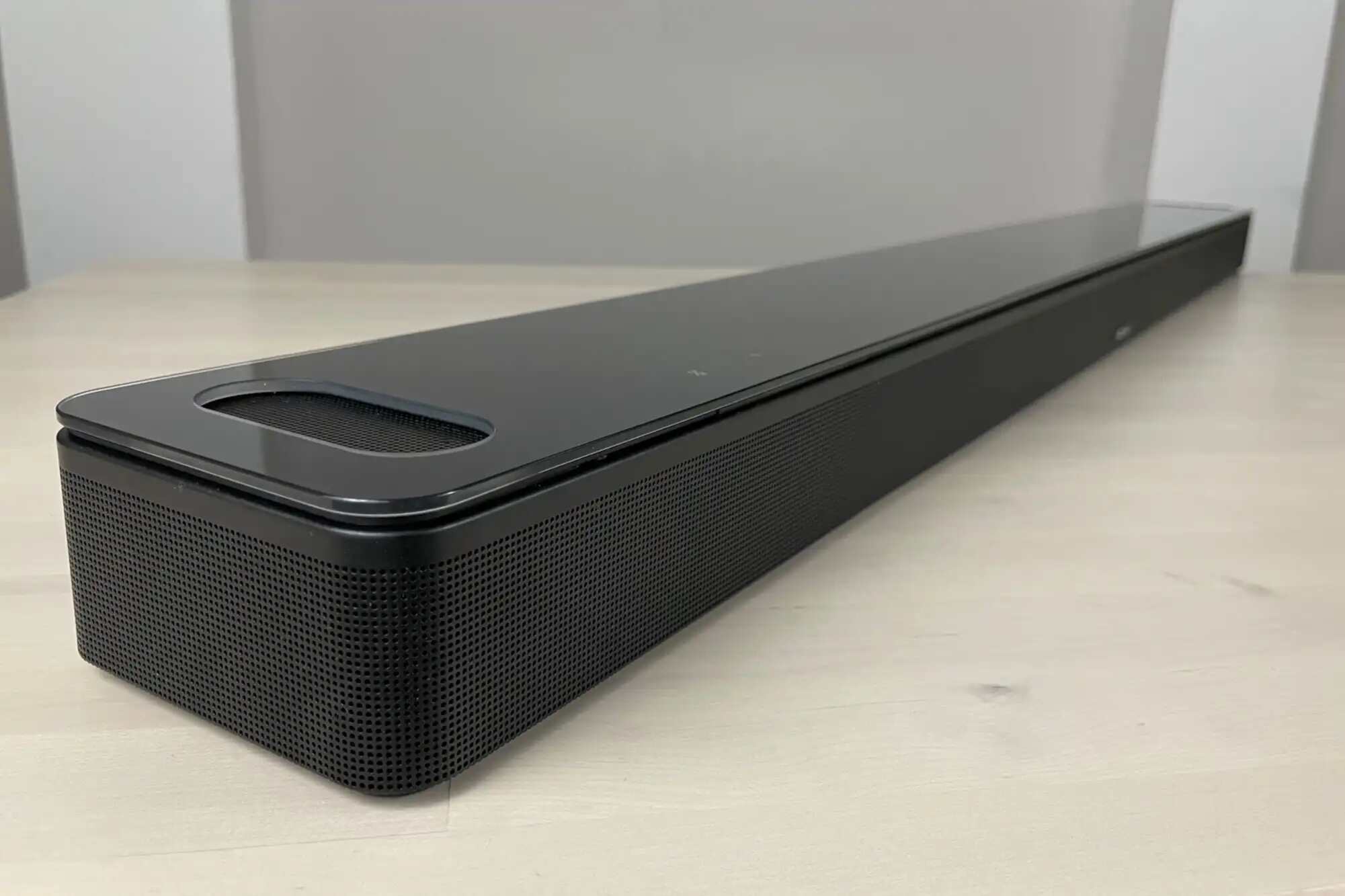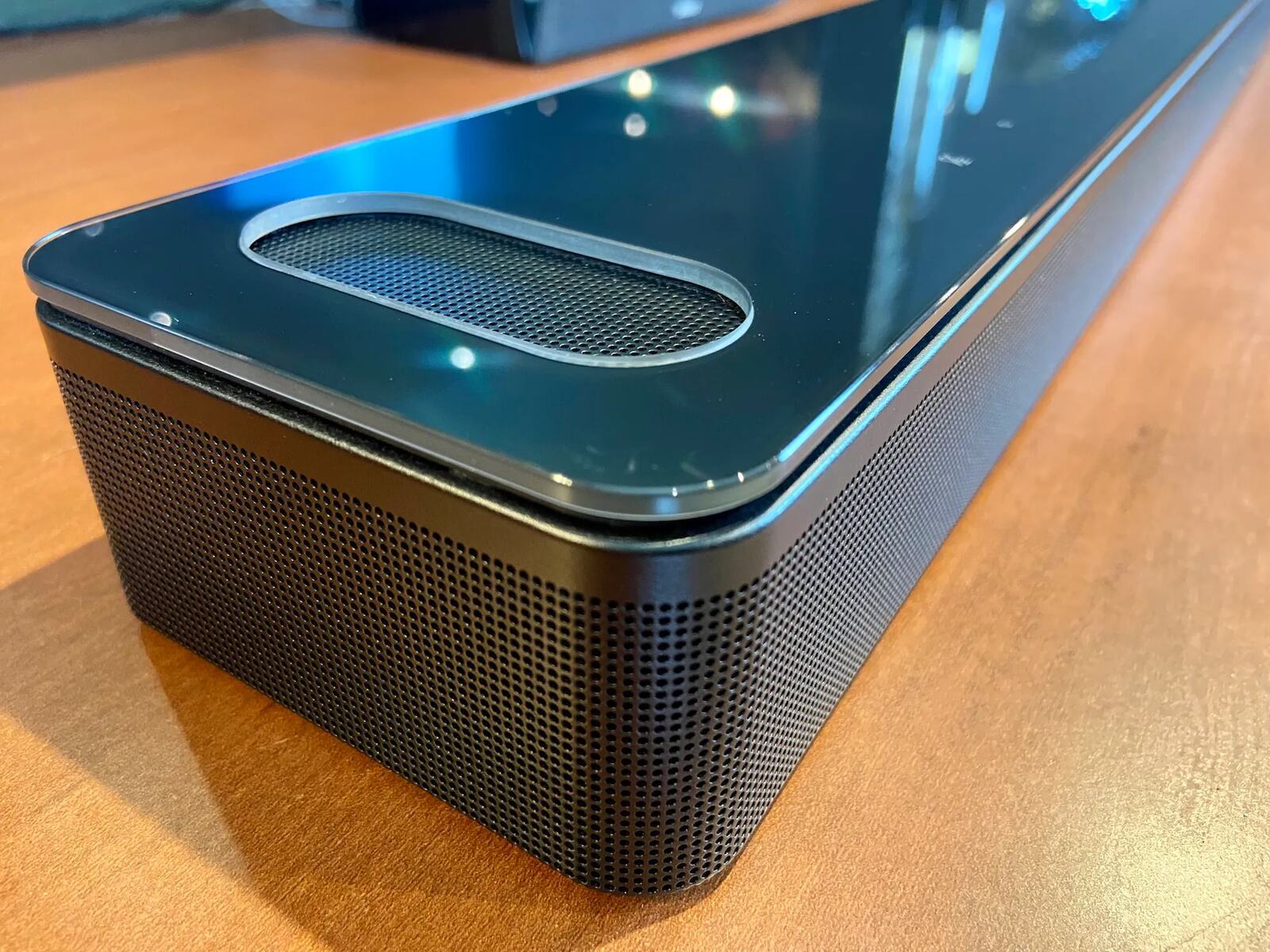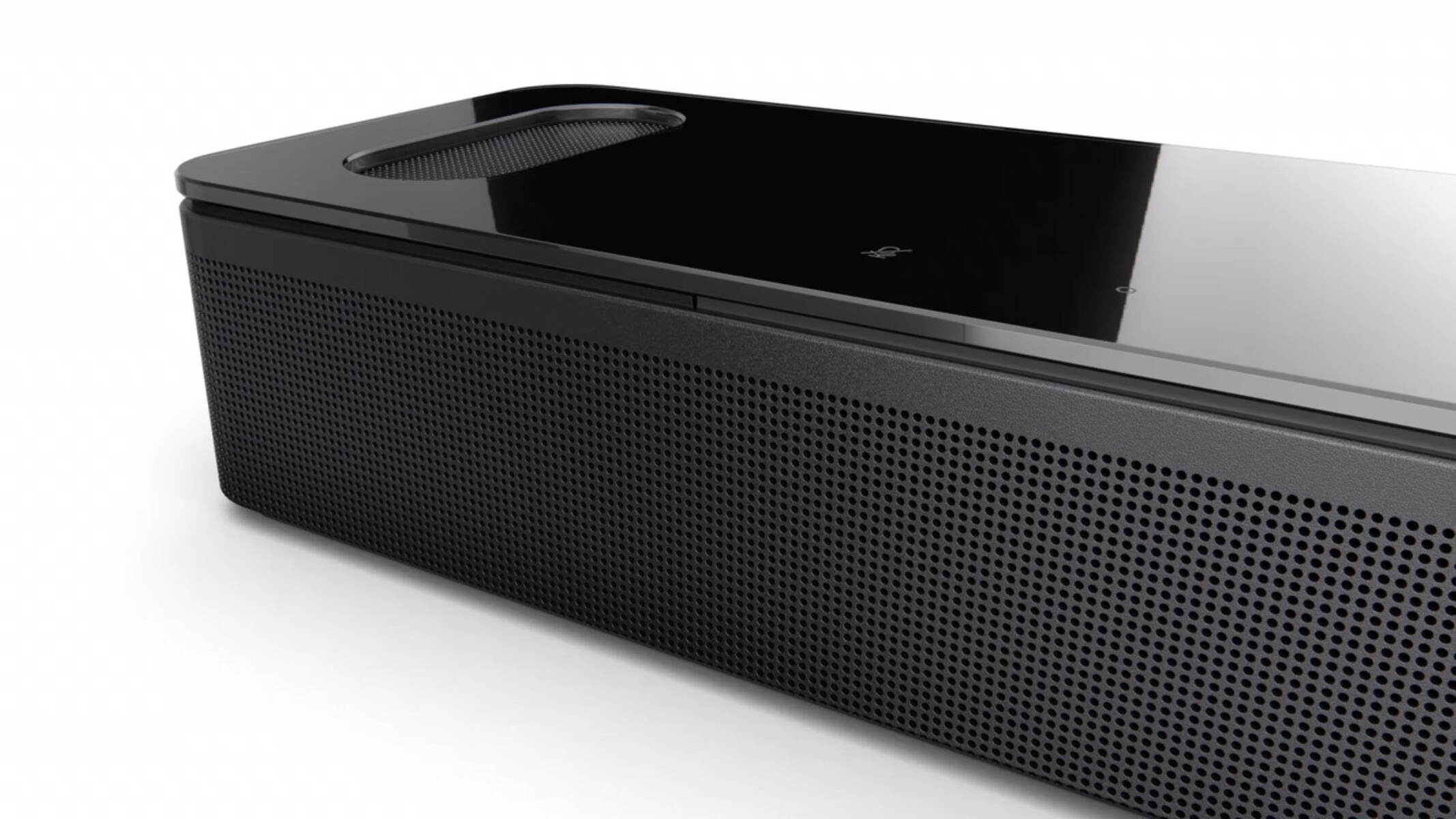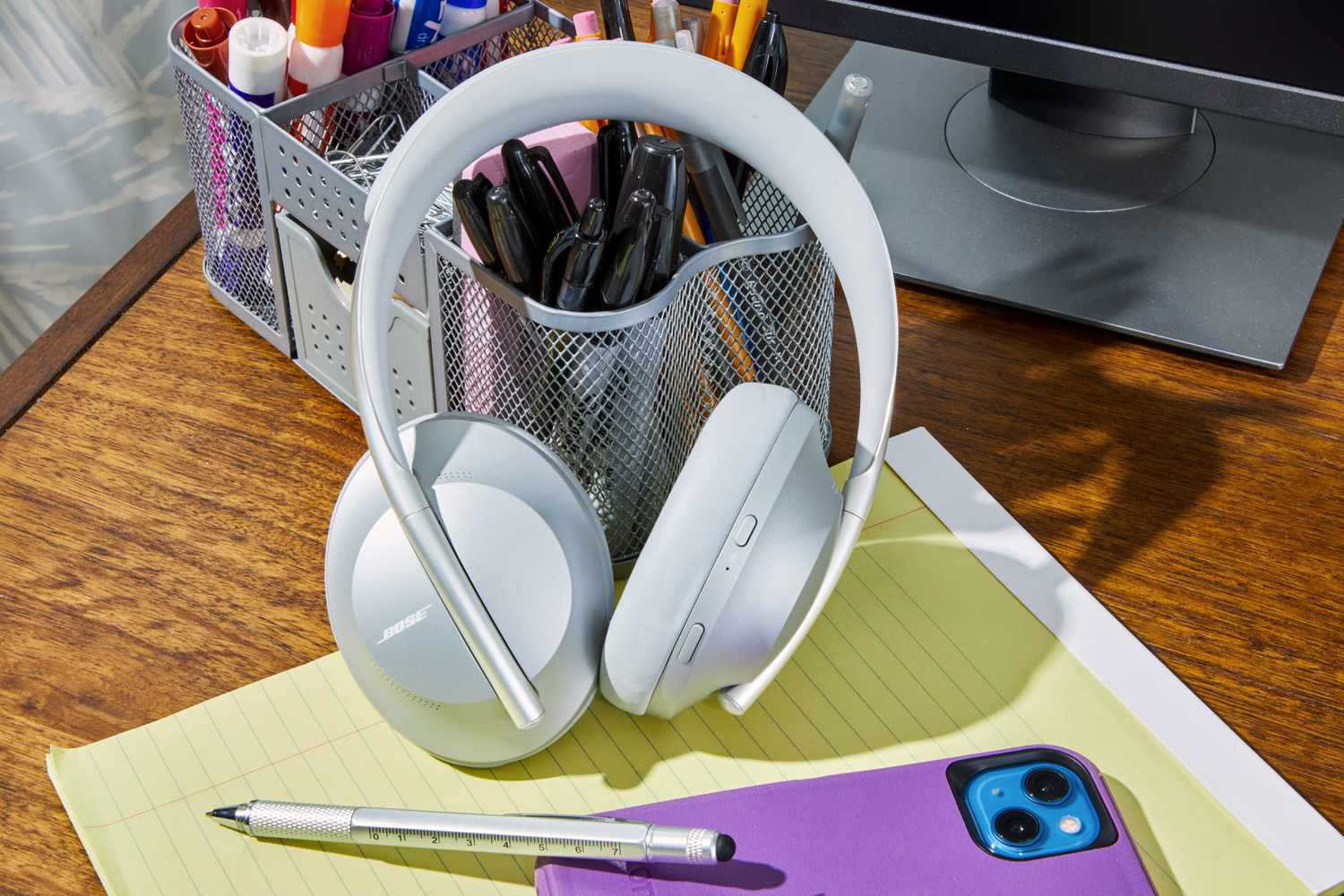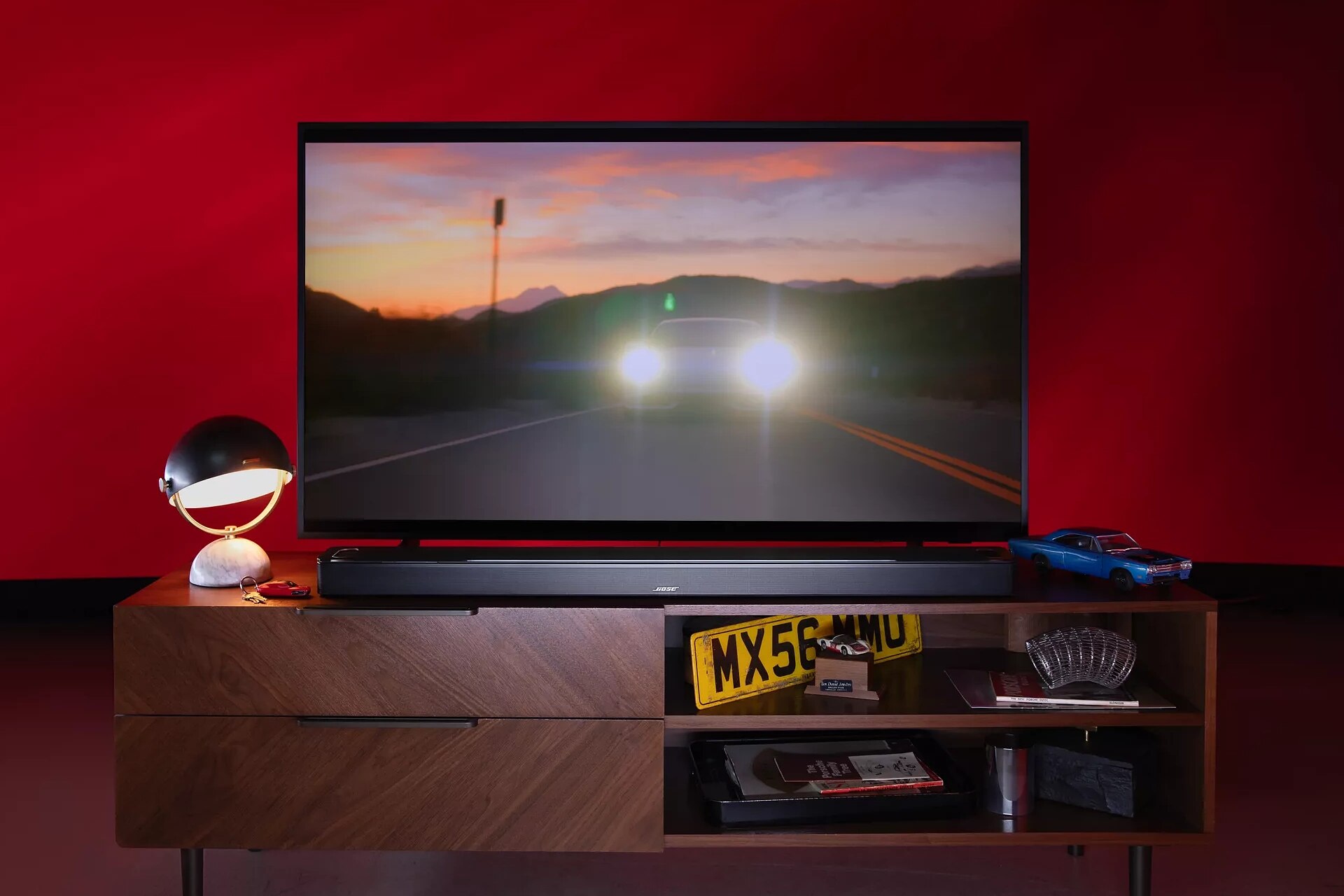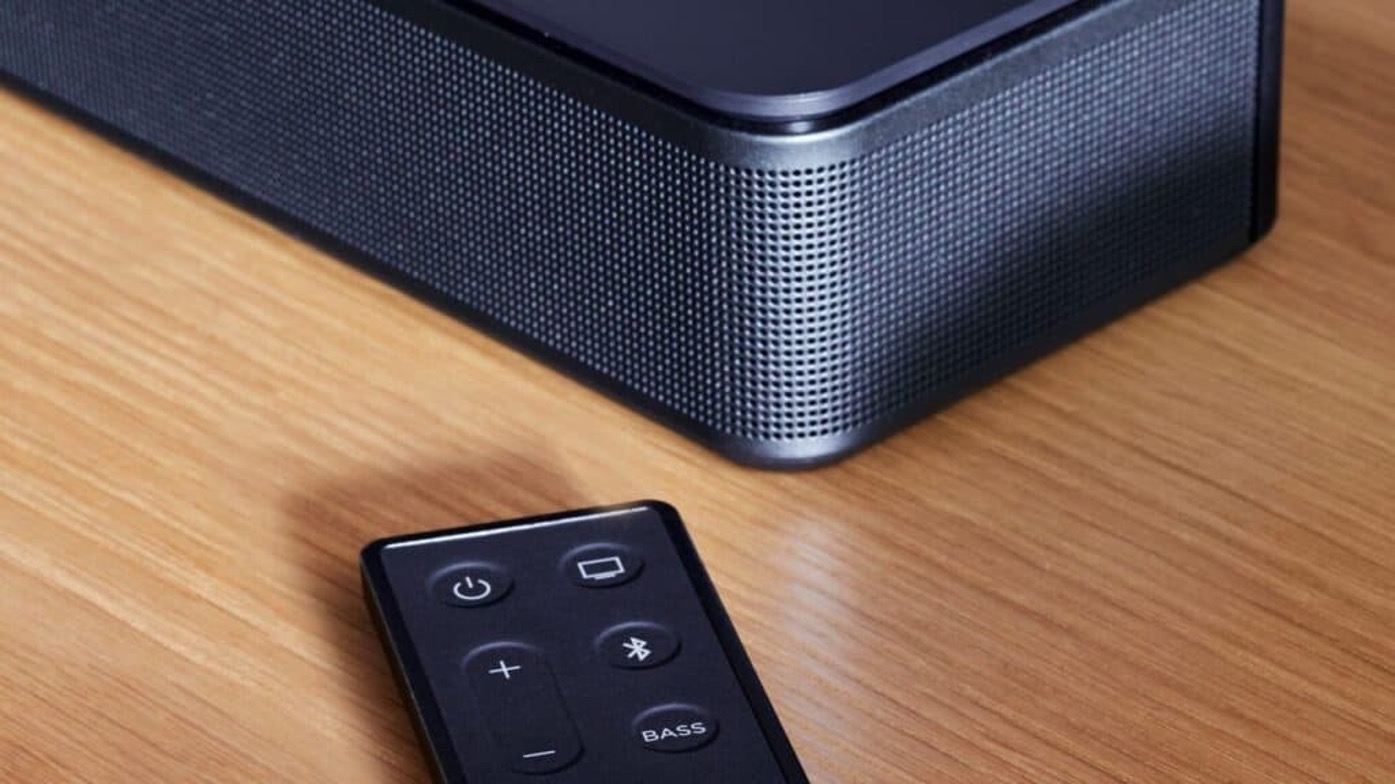Introduction
Welcome to this comprehensive guide on how to set up the Bose 900 Soundbar. Whether you’re a seasoned audio enthusiast or someone who simply appreciates high-quality sound, the Bose 900 Soundbar is a fantastic choice for elevating your home theater experience. In this article, we will walk you through the step-by-step process of unboxing, connecting, and configuring your soundbar, so you can start enjoying immersive audio in no time.
The Bose 900 Soundbar is known for its cutting-edge technology and impressive sound performance. With its sleek design and advanced features, it can effortlessly elevate the audio quality of your favorite movies, TV shows, and music. Before diving into the setup process, it’s important to mention that the Bose 900 Soundbar is designed to be compatible with various devices, including your TV, gaming console, streaming devices, and more.
In the following sections, we will guide you through the necessary steps to connect your soundbar to your TV and other external devices, set up Wi-Fi connectivity, utilize the Bose Music App to customize your listening experience, adjust soundbar settings, enable voice control, troubleshoot common issues, and ultimately enjoy the exceptional sound quality delivered by the Bose 900 Soundbar.
So, whether you’re a tech-savvy individual or just getting started with audio equipment, this guide will provide you with all the information you need to set up your Bose 900 Soundbar and unleash its full potential. Let’s dive in and get started on enhancing your audio experience with this incredible piece of technology.
Unboxing the Bose 900 Soundbar
Before you begin setting up your Bose 900 Soundbar, it’s important to unbox it carefully to ensure that all the necessary components are present and undamaged.
Start by locating the box containing your soundbar. Open the box and carefully remove the contents. You should find the Bose 900 Soundbar itself, along with a power cable, an HDMI cable, a remote control, and any additional accessories that may have been included.
Inspect each item, ensuring that there are no visible signs of damage or defects. If you notice any issues, it is recommended to reach out to Bose customer support for assistance and possible replacement.
Once you have confirmed that all the components are in good condition, you can proceed with the setup process. Place the soundbar near your television, ensuring that it is positioned in a central location for optimal sound distribution.
Before moving onto the next step, take a moment to familiarize yourself with the various ports and buttons on the soundbar. This will make the connection process easier later on. Look for HDMI ports, USB ports, and an optical audio input. Some soundbars may also have additional connectivity options, such as Ethernet or AUX inputs.
In the next section, we will guide you through the process of connecting the Bose 900 Soundbar to your television, bringing you one step closer to enjoying immersive audio in your home.
Connecting the Soundbar to your TV
Now that you have unboxed the Bose 900 Soundbar, it’s time to connect it to your TV. This step is essential to ensure that the soundbar can receive audio from your television and deliver an immersive audio experience.
Start by identifying the HDMI ARC (Audio Return Channel) port on your TV. This port allows for two-way communication between the TV and the soundbar, eliminating the need for separate audio cables.
Next, take the HDMI cable that came with your soundbar and connect one end to the HDMI ARC port on your TV. Make sure to firmly insert the cable into the port to establish a secure connection.
Proceed by connecting the other end of the HDMI cable to the HDMI ARC port on your Bose 900 Soundbar. Again, ensure that the cable is securely inserted into the port to avoid any connectivity issues.
Once the HDMI connection is established, you can now power on your TV and the soundbar. Use the power cable provided with the soundbar to connect it to a power outlet. After a few moments, the soundbar should turn on and enter the setup mode.
Now, grab the remote control that came with your soundbar. Press the “source” or “input” button on the remote until you see your TV listed as the selected source on the soundbar’s display or hear the audio coming through the soundbar.
To ensure that the audio signal is correctly routed through the soundbar, access your TV’s settings menu and navigate to the audio settings. Select the output option to “audio system” or “external speaker” to set the audio output to the soundbar.
With the connection successfully established, you can now play content on your TV and enjoy exceptional sound quality through the Bose 900 Soundbar. In the next section, we will explore how to connect external devices such as gaming consoles and media streaming devices to the soundbar.
Connecting External Devices to the Soundbar
In addition to connecting your TV to the Bose 900 Soundbar, you may want to connect other external devices such as gaming consoles, Blu-ray players, or media streaming devices to enhance your audio and entertainment experience.
To connect these devices, you have a few options depending on the available ports and connectivity features of your soundbar.
If your external device supports HDMI, you can simply connect it to one of the HDMI input ports on the soundbar. Plug one end of an HDMI cable into the HDMI output port on your device, and the other end into an available HDMI input port on the soundbar. This will allow you to enjoy both high-quality video and audio output through the soundbar.
If your device doesn’t support HDMI, you can utilize other input options such as optical audio, coaxial audio, or AUX input. Optical audio and coaxial audio connections utilize digital audio cables to transmit audio signals. Connect one end of the appropriate cable to the corresponding output port on your device and the other end to the respective input port on the soundbar.
For devices with analog output, such as older gaming consoles or CD players, you can use the AUX input. Connect one end of a stereo audio cable with 3.5mm or RCA connectors to the audio output port on your device, and the other end to the AUX input port on the soundbar.
Once you have connected your external devices to the soundbar, make sure to select the appropriate input source on the soundbar using the remote control. This will allow you to switch between different devices and enjoy their audio through the soundbar.
Remember to configure the audio settings on your connected devices to output audio through the soundbar. This ensures that the audio signal is properly routed and delivers the best audio experience.
By connecting your external devices to the Bose 900 Soundbar, you can create a centralized audio hub that enhances your audio experience across all your entertainment devices. In the next section, we will guide you through the process of setting up your soundbar with Wi-Fi connectivity.
Setting Up the Soundbar with Wi-Fi
The Bose 900 Soundbar offers the convenience of connecting to your home Wi-Fi network, allowing you to stream music wirelessly and access various online services. To set up the soundbar with Wi-Fi, follow the steps below:
1. Ensure that your soundbar is powered on and connected to your TV as described in the previous sections.
2. Download and install the Bose Music App on your smartphone or tablet from the App Store or Google Play Store.
3. Open the Bose Music App and follow the prompts to create a Bose account or sign in if you already have one.
4. Once you’ve signed in to your Bose account, tap on the “+” icon in the top-left corner of the app to add a new device.
5. From the list of available devices, select the Bose 900 Soundbar. The app will guide you through the setup process.
6. During setup, ensure that your smartphone or tablet is connected to the same Wi-Fi network that you want to connect your soundbar to.
7. Follow the on-screen instructions to connect the soundbar to your Wi-Fi network. You may be prompted to enter your Wi-Fi network name (SSID) and password.
8. Once the soundbar is successfully connected to your Wi-Fi network, you can personalize the name of your soundbar and assign it to a specific room in your home.
9. With the soundbar connected to your Wi-Fi network, you can now enjoy various streaming services such as Spotify, Apple Music, or Amazon Music. You can also control your soundbar using the Bose Music App.
Setting up the soundbar with Wi-Fi connectivity allows you to unlock a whole new level of convenience and access to a world of music streaming. In the next section, we will explore how to use the Bose Music App to control and customize your soundbar settings.
Using the Bose Music App
The Bose 900 Soundbar is designed to work seamlessly with the Bose Music App, which provides you with a convenient and user-friendly interface to control and customize your soundbar settings. Here is a guide on how to use the Bose Music App:
1. Ensure that your soundbar is connected to your Wi-Fi network as described in the previous section.
2. Download and install the Bose Music App on your smartphone or tablet from the App Store or Google Play Store if you haven’t done so already.
3. Launch the Bose Music App and sign in to your Bose account if you haven’t already done so.
4. Once you’re signed in, the app should automatically detect your Bose 900 Soundbar. Tap on the soundbar’s name to connect to it.
5. The app will display the main control screen, where you can adjust the volume, change inputs, and control playback. You can also access additional settings and features by tapping on the menu icon (usually in the top-left corner) of the app.
6. Within the app, you can customize various sound settings, such as bass, treble, and sound modes, to suit your preferences. Experiment with different settings to find the perfect audio balance for your listening experience.
7. The Bose Music App also allows you to create and save personalized presets. This means you can save your preferred audio settings for different types of content, such as movies, music, or games, and switch between them with ease.
8. Explore the app’s various features, such as music streaming services, internet radio, and podcast platforms. You can browse and control your favorite content directly from the app.
9. Additionally, the app provides software updates for your soundbar, ensuring that you have access to the latest features and improvements. Make sure to periodically check for updates and install them as necessary.
By utilizing the Bose Music App, you can take full control of your soundbar settings and easily tailor the audio experience to your preferences. The app offers a seamless and intuitive way to manage and enhance your audio enjoyment. In the next section, we will explore how to adjust various soundbar settings to optimize your listening experience.
Adjusting Soundbar Settings
The Bose 900 Soundbar offers a range of settings that allow you to customize and optimize your audio experience. By adjusting these settings, you can fine-tune the soundbar to suit your preferences and the specifics of your listening environment. Here are some key settings to consider:
1. Sound Modes:
The soundbar typically has different sound modes designed to enhance specific types of content, such as movies, music, or dialogue. Experiment with different sound modes to find the one that best suits the content you’re enjoying at any given time.
2. Bass and Treble:
Adjusting the bass and treble levels can significantly impact the overall sound quality. Increase the bass for a more immersive and powerful experience, or decrease it for a more balanced sound. Similarly, adjusting the treble can enhance clarity and detail in the higher frequencies.
3. Virtual Surround Sound:
The soundbar may offer virtual surround sound technology, which simulates a more immersive audio experience. Enable this feature to enjoy a wider soundstage and a more encompassing sound experience, especially when watching movies or playing games.
4. Dialogue Enhancement:
If you often find it challenging to hear dialogue clearly, look for a dialogue enhancement setting. Enabling this feature can boost the volume and clarity of dialogue, making it easier to understand and follow conversations in movies or TV shows.
5. Auto-Adjustments:
Some soundbars have features that automatically adjust the sound based on the content being played. These can include volume normalization to prevent sudden loud moments and dynamic range compression to balance volume differences between quiet and loud scenes.
6. Lip Sync:
If you notice a delay between the audio and video when using the soundbar, look for a lip sync adjustment setting. This setting allows you to manually adjust the audio delay to ensure that the sound is synchronized with the on-screen action.
7. Firmware Updates:
Regularly check for firmware updates for your soundbar. These updates often include bug fixes and performance improvements, ensuring that you have the best possible audio experience with your Bose 900 Soundbar.
Take the time to explore and experiment with these settings to find the perfect audio configuration for your personal preference and listening environment. By adjusting the soundbar settings to your liking, you can enhance your overall audio enjoyment and create a truly immersive experience. In the next section, we will delve into setting up voice control with your soundbar.
Setting Up Voice Control
The Bose 900 Soundbar offers the convenience of voice control, allowing you to control various functions and settings using voice commands. Here’s how you can set up voice control with your soundbar:
1. Check Compatibility:
Ensure that your soundbar is compatible with voice control. Some soundbars may support voice assistants like Amazon Alexa or Google Assistant out of the box, while others might require an external voice control device, like an Amazon Echo or Google Home.
2. Connect the Voice Control Device:
If your soundbar supports voice control assistants like Alexa or Google Assistant, follow the manufacturer’s instructions to connect the soundbar to your Wi-Fi network and set up the voice control functionality. This may involve downloading a separate app specific to the voice control platform.
3. Configure Voice Control Settings:
Once your voice control device is set up, navigate to the respective app or device settings to configure the voice control settings for your soundbar. This may include granting the necessary permissions and linking your Bose account to the voice control platform.
4. Activate Voice Control:
At this point, you should be ready to start using voice control with your soundbar. Activate the voice control assistant by saying the “wake word” or command phrase specific to the voice control platform. For example, say “Hey Google” or “Alexa” to initiate voice control.
5. Issue Voice Commands:
Once voice control is activated, you can issue voice commands to control the soundbar. These commands can include adjusting the volume, switching inputs, selecting sound modes, or even playing specific music or media through supported streaming services.
6. Explore Voice Control Capabilities:
Learn about the specific voice commands and capabilities offered by your soundbar and the voice control platform of your choice. This allows you to make the most of the voice control functionality and enjoy hands-free control over your audio setup.
Remember to refer to the documentation and user guides provided by both Bose and the voice control platform to ensure a seamless setup process. By setting up voice control with your soundbar, you can enjoy a convenient and effortless way to control your audio experience. In the next section, we will address common issues that you may encounter with your soundbar and provide troubleshooting tips.
Troubleshooting Common Issues
While the Bose 900 Soundbar is designed to provide a seamless experience, you may encounter some common issues along the way. Here are some troubleshooting tips to address these issues:
1. No Power:
If the soundbar is not powering on, ensure that it is securely connected to a power source. Check the power cable for any signs of damage or loose connections. If necessary, try plugging the soundbar into a different power outlet to rule out any electrical issues.
2. No Sound or Low Volume:
If you’re experiencing no sound or low volume, start by checking the connections between the soundbar and your TV or external devices. Ensure that all cables are securely plugged into the appropriate ports. Additionally, check the volume settings on both the soundbar and your TV to ensure they are not set too low or muted.
3. Audio Sync Issues:
If you notice a delay between the audio and video, adjust the audio sync settings on your soundbar or TV. This will help synchronize the audio with the on-screen action. Consult the user manual or settings menu of your specific device to find the audio sync adjustment option.
4. Wi-Fi Connection Problems:
If you’re having trouble connecting your soundbar to your Wi-Fi network, make sure that your network is functioning properly. Check that your Wi-Fi password is entered correctly, and try moving the soundbar closer to the Wi-Fi router to rule out any range or interference issues. Restarting the Wi-Fi router and soundbar can also help resolve connectivity problems.
5. Remote Control Issues:
If the remote control is not working, check the batteries to ensure they are properly inserted and have sufficient charge. Make sure there are no obstacles blocking the line of sight between the remote control and the soundbar. If the remote control still doesn’t work, try replacing the batteries with new ones.
6. Firmware Update Failures:
If you encounter issues while updating the firmware of your soundbar, ensure that you have a stable internet connection. Disable any VPN or proxy settings that may interfere with the update process. If the issue persists, reach out to Bose customer support for further assistance.
7. Audio Quality Issues:
If you’re experiencing poor audio quality, first make sure that the source material itself is of good quality. Check the audio settings on your soundbar, such as bass, treble, and sound mode, to optimize the audio output. Conduct a sound test with different settings to find the best balance. If the problem persists, try connecting the soundbar to another device to determine whether the issue lies with the soundbar or the original audio source.
If these troubleshooting steps do not resolve your issue, consult the user manual or contact Bose customer support for further assistance. They will be able to provide more specific guidance based on your specific situation. With proper troubleshooting, you can resolve any issues and continue to enjoy your audio experience with the Bose 900 Soundbar.
Enjoying the Bose 900 Soundbar Experience
Now that you have successfully set up and configured your Bose 900 Soundbar, it’s time to sit back, relax, and enjoy the immersive audio experience it delivers. With its advanced technology and customizable features, the soundbar is designed to enhance your home theater experience and bring your favorite media to life.
Whether you’re watching movies, TV shows, or enjoying music, the Bose 900 Soundbar will impress you with its rich sound quality and deep bass. Immerse yourself in the action of your favorite films, feel the thrill of your favorite games, or indulge in the crystal-clear vocals of your beloved music albums. The soundbar’s performance and audio precision will keep you captivated, allowing you to fully immerse yourself in the content you love.
Take advantage of the various sound modes available to tailor the audio experience to the specific content you’re enjoying. Experiment with different settings, such as bass and treble adjustments, to find the perfect balance that suits your preference. The Bose Music App provides added convenience by allowing you to control these settings with ease and even create personalized presets for different types of content.
Don’t forget to explore and utilize the voice control capabilities of the soundbar. Whether it’s issuing voice commands for adjusting volume, switching inputs, or playing music, the hands-free control provided by voice assistants like Alexa or Google Assistant adds an extra level of convenience to your audio setup.
Lastly, keep in mind that the Bose 900 Soundbar is part of an ecosystem of compatible products. Consider expanding your audio setup to further enhance your home entertainment experience. Pair your soundbar with compatible Bose wireless speakers or a subwoofer to create a truly immersive surround sound system that fills the room with breathtaking audio.
Remember to periodically check for firmware updates to ensure that your soundbar benefits from the latest features and performance enhancements offered by Bose. Stay connected with Bose customer support for any assistance or troubleshooting needs that may arise.
With the Bose 900 Soundbar, you have the power to transform your living room into a captivating home theater environment. Embrace the outstanding sound quality, personalized settings, and seamless integration that the soundbar offers, and let it elevate every audio experience to new heights.
Conclusion
Setting up and configuring the Bose 900 Soundbar is a straightforward process that allows you to enjoy immersive audio and elevate your home entertainment experience. By unboxing the soundbar, connecting it to your TV and external devices, setting up Wi-Fi connectivity, utilizing the Bose Music App, adjusting soundbar settings, enabling voice control, and troubleshooting common issues, you can make the most of this powerful audio device.
The Bose 900 Soundbar offers exceptional sound quality, customizable settings, and convenient features such as voice control and wireless connectivity. With its sleek design and advanced technology, it seamlessly blends into your home theater setup, immersing you in a world of captivating sound.
Remember to explore and experiment with the various sound modes and settings to find the audio configuration that suits your personal preferences and listening environment. Utilize the Bose Music App to easily control and customize your soundbar, stream music, and access a variety of online services.
Setting up voice control with your soundbar adds an extra layer of convenience, allowing you to effortlessly control your audio experience with simple voice commands. Troubleshooting common issues ensures that any obstacles are overcome, and you can enjoy uninterrupted sound quality.
As you sit back and enjoy the Bose 900 Soundbar experience, immerse yourself in the rich audio, deep bass, and crystal-clear vocals it delivers. Let it transport you into the heart of your favorite movies, games, and music, bringing every moment to life in stunning detail.
Expand your audio setup by incorporating compatible Bose wireless speakers or a subwoofer to create a surround sound system that envelopes you in a true cinematic experience. Stay connected with Bose customer support and keep your soundbar up to date with firmware updates to take advantage of the latest features and improvements.
Now, armed with the knowledge and guidance provided in this comprehensive guide, you are well-equipped to fully enjoy and optimize your Bose 900 Soundbar. Give yourself the gift of exceptional audio and make every moment of entertainment in your home a sensational experience.







